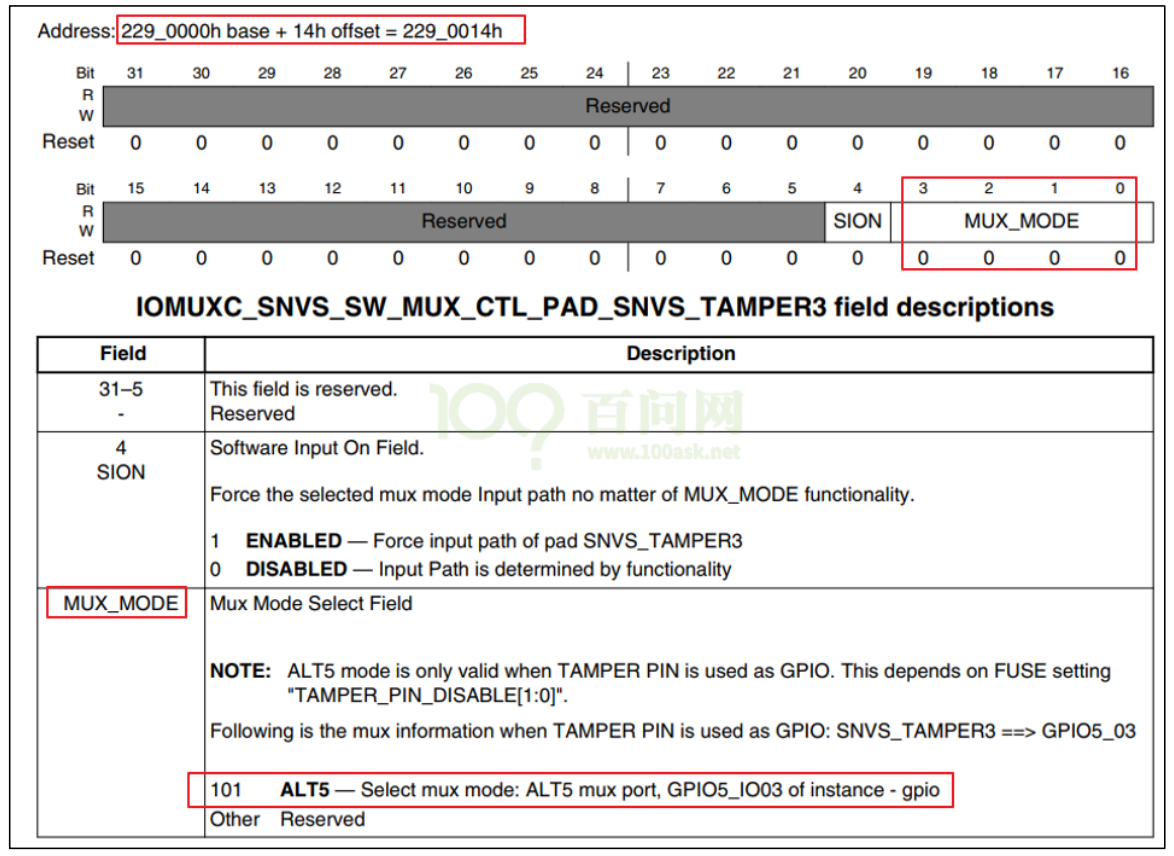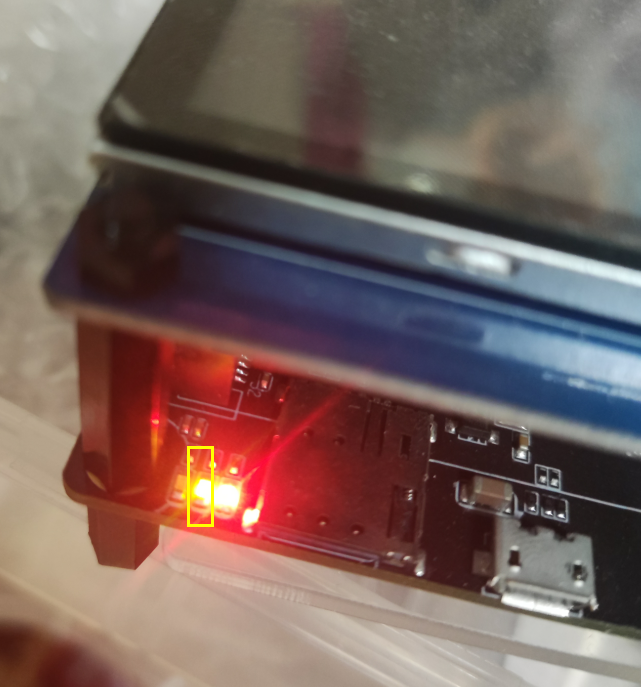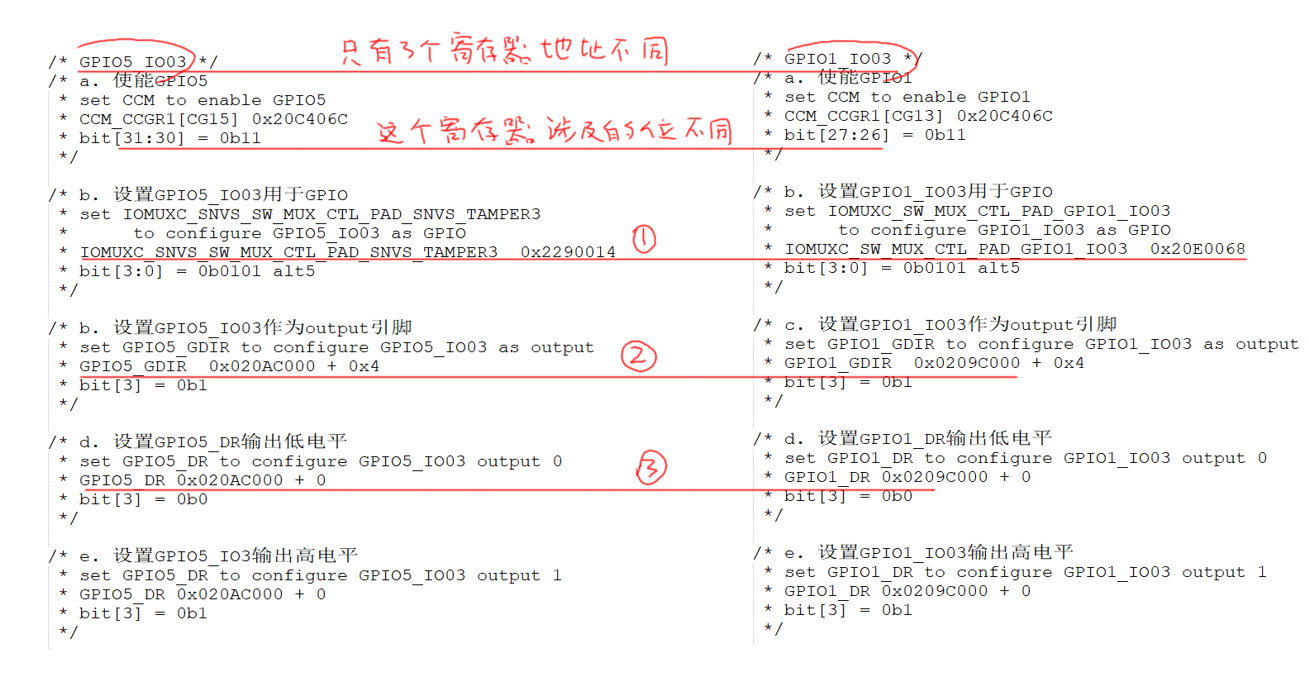** 个人名片:**
🦁作者简介:一名喜欢分享和记录学习的在校大学生
🐯个人主页:妄北y🐧个人QQ:2061314755
🐻个人邮箱:2061314755@qq.com
🦉个人WeChat:Vir2021GKBS
🐼本文由妄北y原创,首发CSDN🎊🎊🎊
🐨座右铭:大多数人想要改造这个世界,但却罕有人想改造自己。
专栏导航:
妄北y系列专栏导航:
C/C++的基础算法:C/C++是一种常用的编程语言,可以用于实现各种算法,这里我们对一些基础算法进行了详细的介绍与分享。🎇🎇🎇
QT基础入门学习:对QT的基础图形化页面设计进行了一个简单的学习与认识,利用QT的基础知识进行了翻金币小游戏的制作🤹🤹🤹
Linux基础编程:初步认识什么是Linux,为什么学Linux,安装环境,进行基础命令的学习,入门级的shell编程。🍻🍻🍻
Linux应用开发基础开发:分享Linux的基本概念、命令行操作、文件系统、用户和权限管理等,网络编程相关知识,TCP/IP 协议、套接字(Socket)编程等,可以实现网络通信功能。💐💐💐
Linux项目开发:Linux基础知识的实践,做项目是最锻炼能力的一个学习方法,这里我们会学习到一些简单基础的项目开发与应用,而且都是毕业设计级别的哦。🤸🤸🤸
非常期待和您一起在这个小小的互联网世界里共同探索、学习和成长。💝💝💝 ✨✨ 欢迎订阅本专栏 ✨✨

文章介绍:
🎉本篇文章对Linux驱动基础学习的相关知识进行分享!🥳🥳🥳
如果您觉得文章不错,期待你的一键三连哦,你的鼓励是我创作动力的源泉,让我们一起加油,一起奔跑,让我们顶峰相见!!!💪💪💪
🎁感谢大家点赞👍收藏⭐评论✍️
目录:
一、怎么写 LED 驱动程序?
详细步骤如下:
(1)**看原理图确定引脚**,确定引脚输出什么电平才能点亮/熄灭 LED
(2)**看主芯片手册**,确定寄存器操作方法:哪些寄存器?哪些位?地址是?
(3)**编写驱动:**先写框架,再写硬件操作的代码
** 注意:**在芯片手册中确定的寄存器地址被称为**物理地址**,在 Linux 内核中无法直接使用。 需要使用内核提供的 ioremap 把物理地址映射为**虚拟地址**,使用虚拟地址。
1.1 ioremap 函数的使用:
1.1.1 函数原型:
void __iomem *ioremap(resource_size_t res_cookie, size_t size)
**使用时,要包含头文件: **
#include <asm/io.h>
1.1.2 作用:
把**物理地址** phys_addr 开始的一段空间(大小为 size),映射为**虚拟地址;**返回值是该段虚拟地址的首地址。
virt_addr = ioremap(phys_addr, size);
实际上,它是按**页(4096 字节)**进行映射的,是整页整页地映射的。 假设 phys_addr = 0x10002,size=4,ioremap 的内部实现是:
(1) phys_addr 按页取整,得到地址 0x10000
(2) size 按页取整,得到 4096
(3)把起始地址 0x10000,大小为 4096 的这一块物理地址空间,映射到虚拟地址空间, 假设得到的虚拟空间起始地址为 0xf0010000
(4) 那么 phys_addr = 0x10002 对应的 virt_addr = 0xf0010002
1.1.3 不再使用该段虚拟地址时,要 iounmap(virt_addr):
void iounmap(volatile void __iomem *cookie)
1.1.4为什么需要映射为虚拟地址

1.2 volatile 函数的使用:
编译器很聪明,会帮我们做些优化,比如:
int a;
a = 0; // 这句话可以优化掉,不影响 a 的结果
a = 1;
有时候编译器会自作聪明,比如:
int *p = ioremap(xxxx, 4); // GPIO 寄存器的地址
*p = 0; // 点灯,但是这句话被优化掉了
*p = 1; // 灭灯
对于上面的情况,为了避免编译器自动优化,需要加上 volatile,告诉它 “这是容易出错的,别乱优化”:
volatile int *p = ioremap(xxxx, 4); // GPIO 寄存器的地址
*p = 0; // 点灯,这句话不会被优化掉
*p = 1; // 灭灯
二、IMX6ULL 的 LED 驱动程序
2.1 led 原理图
LED 原理图,它使用 GPIO5_IO03,引脚输出低电平时 LED 被点亮, 输出高电平时 LED 被熄灭:
2.2 所涉及的寄存器操作

2.3 代码操作硬件

2.3.1使能 GPIO5

设置 b[31:30]就可以使能 GPIO5
** 注意:在 imx6ullrm.pdf 中,CCM_CCGR1** 的 b[31:30]是保留位, 不去设置 b[31:30],GPIO5 也是默认使能的。
设置为 0b11:

** 00:**该 GPIO 模块全程被关闭
** 01:**该 GPIO 模块在 CPU run mode 情况下是使能的;在 WAIT 或 STOP 模式下,关闭
** 10:**保留
** 11:**该 GPIO 模块全程使能
/* GPIO5_IO03 */
/* a. 使能 GPIO5
* set CCM to enable GPIO5
* CCM_CCGR1[CG15] 0x20C406C
* bit[31:30] = 0b11
*/
2.3.2 设置 GPIO5_IO03 为 GPIO 模式
设置如下寄存器:

/* b. 设置 GPIO5_IO03 用于 GPIO
* set IOMUXC_SNVS_SW_MUX_CTL_PAD_SNVS_TAMPER3
* to configure GPIO5_IO03 as GPIO
* IOMUXC_SNVS_SW_MUX_CTL_PAD_SNVS_TAMPER3 0x2290014
* bit[3:0] = 0b0101 alt5
*/
2.3.3 设置 GPIO5_IO03 为输出引脚,设置其输出电平
设置 GPIO5_IO03 为输出引脚,寄存器地址为:

**设置方向寄存器,方向寄存器,把引脚设置为输出引脚: **

**设置数据寄存器,设置引脚的输出电平: **

/* c. 设置 GPIO5_IO03 作为 output 引脚
* set GPIO5_GDIR to configure GPIO5_IO03 as output
* GPIO5_GDIR 0x020AC000 + 0x4
* bit[3] = 0b1
*/
/* d. 设置 GPIO5_DR 输出低电平
* set GPIO5_DR to configure GPIO5_IO03 output 0
* GPIO5_DR 0x020AC000 + 0
* bit[3] = 0b0
*/
/* e. 设置 GPIO5_IO3 输出高电平
* set GPIO5_DR to configure GPIO5_IO03 output 1
* GPIO5_DR 0x020AC000 + 0
* bit[3] = 0b1
*/
三、写程序
3.1 led_opr.h
#ifndef _LED_OPR_H
#define _LED_OPR_H
struct led_operations {
int num;
int (*init) (int which); /* 初始化LED, which-哪个LED */
int (*ctl) (int which, char status); /* 控制LED, which-哪个LED, status:1-亮,0-灭 */
};
struct led_operations *get_board_led_opr(void);
#endif
3.2 board_100ask_imx6ull.c
#include <linux/module.h>
#include <linux/fs.h>
#include <linux/errno.h>
#include <linux/miscdevice.h>
#include <linux/kernel.h>
#include <linux/major.h>
#include <linux/mutex.h>
#include <linux/proc_fs.h>
#include <linux/seq_file.h>
#include <linux/stat.h>
#include <linux/init.h>
#include <linux/device.h>
#include <linux/tty.h>
#include <linux/kmod.h>
#include <linux/gfp.h>
#include <asm/io.h>
#include "led_opr.h"
static volatile unsigned int *CCM_CCGR1 ;
static volatile unsigned int *IOMUXC_SNVS_SW_MUX_CTL_PAD_SNVS_TAMPER3;
static volatile unsigned int *GPIO5_GDIR ;
static volatile unsigned int *GPIO5_DR ;
static int board_demo_led_init (int which) /* 初始化LED, which-哪个LED */
{
unsigned int val;
//printk("%s %s line %d, led %d\n", __FILE__, __FUNCTION__, __LINE__, which);
if (which == 0)
{
if (!CCM_CCGR1)
{
CCM_CCGR1 = ioremap(0x20C406C, 4);
IOMUXC_SNVS_SW_MUX_CTL_PAD_SNVS_TAMPER3 = ioremap(0x2290014, 4);
GPIO5_GDIR = ioremap(0x020AC000 + 0x4, 4);
GPIO5_DR = ioremap(0x020AC000 + 0, 4);
}
/* GPIO5_IO03 */
/* a. 使能GPIO5
* set CCM to enable GPIO5
* CCM_CCGR1[CG15] 0x20C406C
* bit[31:30] = 0b11
*/
*CCM_CCGR1 |= (3<<30);
/* b. 设置GPIO5_IO03用于GPIO
* set IOMUXC_SNVS_SW_MUX_CTL_PAD_SNVS_TAMPER3
* to configure GPIO5_IO03 as GPIO
* IOMUXC_SNVS_SW_MUX_CTL_PAD_SNVS_TAMPER3 0x2290014
* bit[3:0] = 0b0101 alt5
*/
val = *IOMUXC_SNVS_SW_MUX_CTL_PAD_SNVS_TAMPER3;
val &= ~(0xf);
val |= (5);
*IOMUXC_SNVS_SW_MUX_CTL_PAD_SNVS_TAMPER3 = val;
/* b. 设置GPIO5_IO03作为output引脚
* set GPIO5_GDIR to configure GPIO5_IO03 as output
* GPIO5_GDIR 0x020AC000 + 0x4
* bit[3] = 0b1
*/
*GPIO5_GDIR |= (1<<3);
}
return 0;
}
static int board_demo_led_ctl (int which, char status) /* 控制LED, which-哪个LED, status:1-亮,0-灭 */
{
//printk("%s %s line %d, led %d, %s\n", __FILE__, __FUNCTION__, __LINE__, which, status ? "on" : "off");
if (which == 0)
{
if (status) /* on: output 0*/
{
/* d. 设置GPIO5_DR输出低电平
* set GPIO5_DR to configure GPIO5_IO03 output 0
* GPIO5_DR 0x020AC000 + 0
* bit[3] = 0b0
*/
*GPIO5_DR &= ~(1<<3);
}
else /* off: output 1*/
{
/* e. 设置GPIO5_IO3输出高电平
* set GPIO5_DR to configure GPIO5_IO03 output 1
* GPIO5_DR 0x020AC000 + 0
* bit[3] = 0b1
*/
*GPIO5_DR |= (1<<3);
}
}
return 0;
}
static struct led_operations board_demo_led_opr = {
.num = 1,
.init = board_demo_led_init,
.ctl = board_demo_led_ctl,
};
struct led_operations *get_board_led_opr(void)
{
return &board_demo_led_opr;
}
它首先构造了一个** led_operations 结构体**,用来表示 LED 的硬件操作:static struct led_operations board_demo_led_opr = { .num = 1, .init = board_demo_led_init, .ctl = board_demo_led_ctl, };
** led_operations 结构体中有init函数指针** , 它指向**board_demo_led_init **函数,在里面将会初始化 LED 引脚:**使能、设置为 GPIO 模式、设置为输出引脚**。 第 35~38 行,对于寄存器要先使用 ioremap 得到它的**虚拟地址**,以后使用虚拟地址访问寄存器:static volatile unsigned int *CCM_CCGR1 ; static volatile unsigned int *IOMUXC_SNVS_SW_MUX_CTL_PAD_SNVS_TAMPER3; static volatile unsigned int *GPIO5_GDIR ; static volatile unsigned int *GPIO5_DR ; static int board_demo_led_init (int which) /* 初始化LED, which-哪个LED */ { unsigned int val; //printk("%s %s line %d, led %d\n", __FILE__, __FUNCTION__, __LINE__, which); if (which == 0) { if (!CCM_CCGR1) { CCM_CCGR1 = ioremap(0x20C406C, 4); IOMUXC_SNVS_SW_MUX_CTL_PAD_SNVS_TAMPER3 = ioremap(0x2290014, 4); GPIO5_GDIR = ioremap(0x020AC000 + 0x4, 4); GPIO5_DR = ioremap(0x020AC000 + 0, 4); } /* GPIO5_IO03 */ /* a. 使能GPIO5 * set CCM to enable GPIO5 * CCM_CCGR1[CG15] 0x20C406C * bit[31:30] = 0b11 */ *CCM_CCGR1 |= (3<<30); /* b. 设置GPIO5_IO03用于GPIO * set IOMUXC_SNVS_SW_MUX_CTL_PAD_SNVS_TAMPER3 * to configure GPIO5_IO03 as GPIO * IOMUXC_SNVS_SW_MUX_CTL_PAD_SNVS_TAMPER3 0x2290014 * bit[3:0] = 0b0101 alt5 */ val = *IOMUXC_SNVS_SW_MUX_CTL_PAD_SNVS_TAMPER3; val &= ~(0xf); val |= (5); *IOMUXC_SNVS_SW_MUX_CTL_PAD_SNVS_TAMPER3 = val; /* b. 设置GPIO5_IO03作为output引脚 * set GPIO5_GDIR to configure GPIO5_IO03 as output * GPIO5_GDIR 0x020AC000 + 0x4 * bit[3] = 0b1 */ *GPIO5_GDIR |= (1<<3); } return 0; }
** led_operations 结构体中有 ctl 函数指针,它指向 board_demo_led_ctl 函数,在里面将会根据参数设置 LED 引脚的输出电平**:
static int board_demo_led_ctl (int which, char status) /* 控制LED, which-哪个LED, status:1-亮,0-灭 */ { //printk("%s %s line %d, led %d, %s\n", __FILE__, __FUNCTION__, __LINE__, which, status ? "on" : "off"); if (which == 0) { if (status) /* on: output 0*/ { /* d. 设置GPIO5_DR输出低电平 * set GPIO5_DR to configure GPIO5_IO03 output 0 * GPIO5_DR 0x020AC000 + 0 * bit[3] = 0b0 */ *GPIO5_DR &= ~(1<<3); } else /* off: output 1*/ { /* e. 设置GPIO5_IO3输出高电平 * set GPIO5_DR to configure GPIO5_IO03 output 1 * GPIO5_DR 0x020AC000 + 0 * bit[3] = 0b1 */ *GPIO5_DR |= (1<<3); } } return 0; }
下面的 **get_board_led_opr** 函数供上层调用 , 给上层提供**led_operations 结构体**:struct led_operations *get_board_led_opr(void) { return &board_demo_led_opr; }
3.3 leddrv.c
#include <linux/module.h>
#include <linux/fs.h>
#include <linux/errno.h>
#include <linux/miscdevice.h>
#include <linux/kernel.h>
#include <linux/major.h>
#include <linux/mutex.h>
#include <linux/proc_fs.h>
#include <linux/seq_file.h>
#include <linux/stat.h>
#include <linux/init.h>
#include <linux/device.h>
#include <linux/tty.h>
#include <linux/kmod.h>
#include <linux/gfp.h>
#include "led_opr.h"
/* 1. 确定主设备号 */
static int major = 0;
static struct class *led_class;
struct led_operations *p_led_opr;
#define MIN(a, b) (a < b ? a : b)
/* 3. 实现对应的open/read/write等函数,填入file_operations结构体 */
static ssize_t led_drv_read (struct file *file, char __user *buf, size_t size, loff_t *offset)
{
printk("%s %s line %d\n", __FILE__, __FUNCTION__, __LINE__);
return 0;
}
/* write(fd, &val, 1); */
static ssize_t led_drv_write (struct file *file, const char __user *buf, size_t size, loff_t *offset)
{
int err;
char status;
struct inode *inode = file_inode(file);
int minor = iminor(inode);
printk("%s %s line %d\n", __FILE__, __FUNCTION__, __LINE__);
err = copy_from_user(&status, buf, 1);
/* 根据次设备号和status控制LED */
p_led_opr->ctl(minor, status);
return 1;
}
static int led_drv_open (struct inode *node, struct file *file)
{
int minor = iminor(node);
printk("%s %s line %d\n", __FILE__, __FUNCTION__, __LINE__);
/* 根据次设备号初始化LED */
p_led_opr->init(minor);
return 0;
}
static int led_drv_close (struct inode *node, struct file *file)
{
printk("%s %s line %d\n", __FILE__, __FUNCTION__, __LINE__);
return 0;
}
/* 2. 定义自己的file_operations结构体 */
static struct file_operations led_drv = {
.owner = THIS_MODULE,
.open = led_drv_open,
.read = led_drv_read,
.write = led_drv_write,
.release = led_drv_close,
};
/* 4. 把file_operations结构体告诉内核:注册驱动程序 */
/* 5. 谁来注册驱动程序啊?得有一个入口函数:安装驱动程序时,就会去调用这个入口函数 */
static int __init led_init(void)
{
int err;
int i;
printk("%s %s line %d\n", __FILE__, __FUNCTION__, __LINE__);
major = register_chrdev(0, "100ask_led", &led_drv); /* /dev/led */
led_class = class_create(THIS_MODULE, "100ask_led_class");
err = PTR_ERR(led_class);
if (IS_ERR(led_class)) {
printk("%s %s line %d\n", __FILE__, __FUNCTION__, __LINE__);
unregister_chrdev(major, "led");
return -1;
}
p_led_opr = get_board_led_opr();
for (i = 0; i < p_led_opr->num; i++)
device_create(led_class, NULL, MKDEV(major, i), NULL, "100ask_led%d", i); /* /dev/100ask_led0,1,... */
return 0;
}
/* 6. 有入口函数就应该有出口函数:卸载驱动程序时,就会去调用这个出口函数 */
static void __exit led_exit(void)
{
int i;
printk("%s %s line %d\n", __FILE__, __FUNCTION__, __LINE__);
for (i = 0; i < p_led_opr->num; i++)
device_destroy(led_class, MKDEV(major, i)); /* /dev/100ask_led0,1,... */
device_destroy(led_class, MKDEV(major, 0));
class_destroy(led_class);
unregister_chrdev(major, "100ask_led");
}
/* 7. 其他完善:提供设备信息,自动创建设备节点 */
module_init(led_init);
module_exit(led_exit);
MODULE_LICENSE("GPL");
第98~101行:获取灯的个数
p_led_opr = get_board_led_opr(); //获得单板提供的结构体 for (i = 0; i < p_led_opr->num; i++) //获取灯的个数 device_create(led_class, NULL, MKDEV(major, i), NULL, "100ask_led%d", i); /* /dev/100ask_led0,1,... */
3.4 ledtest.c
#include <sys/types.h>
#include <sys/stat.h>
#include <fcntl.h>
#include <unistd.h>
#include <stdio.h>
#include <string.h>
/*
* ./ledtest /dev/100ask_led0 on
* ./ledtest /dev/100ask_led0 off
*/
int main(int argc, char **argv)
{
int fd;
char status;
/* 1. 判断参数 */
if (argc != 3)
{
printf("Usage: %s <dev> <on | off>\n", argv[0]);
return -1;
}
/* 2. 打开文件 */
fd = open(argv[1], O_RDWR);
if (fd == -1)
{
printf("can not open file %s\n", argv[1]);
return -1;
}
/* 3. 写文件 */
if (0 == strcmp(argv[2], "on"))
{
status = 1;
write(fd, &status, 1);
}
else
{
status = 0;
write(fd, &status, 1);
}
close(fd);
return 0;
}
3.5 Makefile
# 1. 使用不同的开发板内核时, 一定要修改KERN_DIR
# 2. KERN_DIR中的内核要事先配置、编译, 为了能编译内核, 要先设置下列环境变量:
# 2.1 ARCH, 比如: export ARCH=arm64
# 2.2 CROSS_COMPILE, 比如: export CROSS_COMPILE=aarch64-linux-gnu-
# 2.3 PATH, 比如: export PATH=$PATH:/home/book/100ask_roc-rk3399-pc/ToolChain-6.3.1/gcc-linaro-6.3.1-2017.05-x86_64_aarch64-linux-gnu/bin
# 注意: 不同的开发板不同的编译器上述3个环境变量不一定相同,
# 请参考各开发板的高级用户使用手册
KERN_DIR = /home/book/100ask_imx6ull-sdk/Linux-4.9.88
all:
make -C $(KERN_DIR) M=`pwd` modules
$(CROSS_COMPILE)gcc -o ledtest ledtest.c
clean:
make -C $(KERN_DIR) M=`pwd` modules clean
rm -rf modules.order
rm -f ledtest
# 参考内核源码drivers/char/ipmi/Makefile
# 要想把a.c, b.c编译成ab.ko, 可以这样指定:
# ab-y := a.o b.o
# obj-m += ab.o
# leddrv.c board_100ask_imx6ull.c 编译成 100ask_led.ko
100ask_led-y := leddrv.o board_100ask_imx6ull.o
obj-m += 100ask_led.o
内核路径:

四、上机测试
4.1编译
编译程序,把代码上传代服务器后执行 make 命令。

cp 100ask_led.ko ledtest.c ~/nfs_rootfs/
4.2 挂载到开发板
在开发板上挂载 NFS


4.3 测试
注意:如果要使用板子自带的系统,需要关闭原有 LED 驱动,也是进 入开发板/sys/class/leds/目录,对于每一个 LED 在该目录下都有一个子目录, 假设某个子目录名为 XXX,则执行如下命令:
[root@100ask:~]# echo none > /sys/class/leds/XXX/trigger
使用我们的系统时,要先禁止内核中原来的 LED 驱动,把“heatbeat”功能关闭,执行以下命令即可:
[root@100ask:~]# echo none > /sys/class/leds/cpu/trigger
这样就可以使用我们的驱动程序做操作了:
[root@100ask:~]#insmod 100ask_led.ko
[root@100ask:~]#/ledtest /dev/100ask_led0 on
[root@100ask:~]#/ledtest /dev/100ask_led0 off
如果想恢复原来的心跳功能,可以执行:
[root@100ask:~]#echo heartbeat > /sys/class/leds/cpu/trigger
[root@100ask:/mnt]# ls /dev/100ask_led0* -l //查询驱动
crw------- 1 root root 240, 0 Jan 1 00:08 /dev/100ask_led0 //查询结果
[root@100ask:/mnt]# ./ledtest /dev/100ask_led0 on //打开灯
[root@100ask:/mnt]# ./ledtest /dev/100ask_led0 off //关闭灯
4.4 实验效果
点亮的是红灯旁边的黄色灯,照片可能看的效果不是很明显
执行**/mnt/ledtest /dev/myled on** 这里有一个黄色小灯会亮起来

执行**/mnt/ledtest /dev/myled off** 这里有一个黄色小灯会熄灭
大佬觉得有用的话点个赞 👍🏻 呗。
❤️❤️❤️本人水平有限,如有纰漏,欢迎各位大佬评论批评指正!😄😄😄💘💘💘如果觉得这篇文对你有帮助的话,也请给个点赞、收藏下吧,非常感谢!👍 👍 👍
🔥🔥🔥任务在无形中完成,价值在无形中升华,让我们一起加油吧!🌙🌙🌙

版权归原作者 妄北y 所有, 如有侵权,请联系我们删除。


